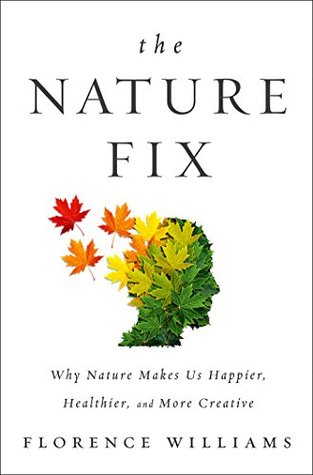More on this book
Community
Kindle Notes & Highlights
Read between
September 5, 2018 - June 24, 2019
May your trails be crooked, winding, lonesome, dangerous, leading to the most amazing view. —EDWARD ABBEY
“People may avoid nearby nature because a chronic disconnection from nature causes them to underestimate its hedonic benefits.” So we do things we
Homo sapiens officially became an urban species sometime in 2008. That’s when the World Health Organization reported that for the first time more people throughout the world live in urban areas than rural ones. Last year in the United States, cities grew at a faster clip than suburban regions for the first time in a hundred years.
forest medicine.
“biophilia”; that honor goes to social psychologist Erich Fromm, who described it in 1973 as “the passionate love of life and of all that is alive; it is the wish to further growth, whether in a person, a plant, an idea or a social group.” Wilson distills
Miyazaki’s taken hundreds of research subjects into the woods since 2004. He and his colleague Juyoung Lee, then also of Chiba University, found that leisurely forest walks, compared to urban walks, deliver a 12 percent decrease in cortisol levels. But that wasn’t all; they recorded a 7 percent decrease in sympathetic nerve activity, a 1.4 percent decrease in blood pressure, and a 6 percent decrease in heart rate. On psychology questionnaires, they also
Specifically, he studies natural killer immune cells, called NK cells, which protect us from disease agents and can, like cortisol and hemoglobin, be reliably measured in a laboratory. A type of white blood cell, they’re handy to have around, since they send self-destruct messages to tumors and virus-infected cells. It’s been known for a long time that factors like stress, aging, and pesticides can reduce your NK count, at least temporarily. So, Li wondered, if nature reduces stress, could it also increase your NK cells and thereby help you fight infections and cancer? To find out, Li brought
...more
But Li found similar results with NK cells exposed to phytoncides in a petri dish. The
“If you have time for vacation, don’t go to a city. Go to a natural area. Try to go one weekend a month. Visit a park at least once a week. Gardening is good. On urban walks, try to walk under trees, not across fields. Go to a quiet place. Near water is also good.”
When you walk out in nature, it’s like wearing rose-colored glasses. In nature everything is a little more positive, there’s a little more connectedness.
Perhaps what matters is not the source of the stress but the ability to recover from it.
One of the compelling theories about nature is that it acts like an advanced drug, a sort of smart pill that works selectively on the default network
when we have a positive nature experience, it engages what’s good in the default network without allowing us to wallow too much in what’s problematic.
when people walk in nature, they obsess over negative thoughts much less than when they walk in a city.
Their work continued to evolve around cognition. Mine turned in the directions of emotional, physiological, and health-related effects of nature.”
We’ve known for a long time that athletes and artists can easily access flow states; the idea that the rest of us can touch that zone through nature is tantalizing.
Art Kramer had helped find a beautiful biomarker, the neural growth factor BDNF, which spritzes the brain like Miracle-Gro during exercise. Could nature exposure unleash some similar, visible
next section, which looks at the immediate benefits of nearby nature.
Park Hyun-Soo
Here, in his mountain aerie, he stands at the forefront of South Korea’s project to medicalize nature, beginning with its immediate sensory effects.
Jangseong Healing Forest
This forest, with its dominant cypress trees, is considered a jewel in the system. Finally,
Atmospherically, these serve a cloud-seeding function, helping forests regulate their moisture levels. But Park, healing instructor that he is, holds a strictly medical appreciation. “The phytoncides
Geosmin comes from soil organisms, particularly the streptomyces bacteria that are key to so many antibiotics. According to the Royal Society of Chemistry, we are alert to this rich smell in incredibly small quantities. We can detect the equivalent of seven drops of geosmin in a swimming pool. This sensitivity likely reflects an important evolutionary
The pinene instantly
lowered their heart rates four points, while the limonene and the control did not make a difference.
“This is a very big effect, bigger than people get with pharmaceuticals!”
Looking at Sepial’s data, Park told her that because she wasn’t used to exercise, the walk had actually stressed her out physiologically. “You need to exercise more,” he said. It seemed a logical prescription. Don’t health-care practitioners always say that?


